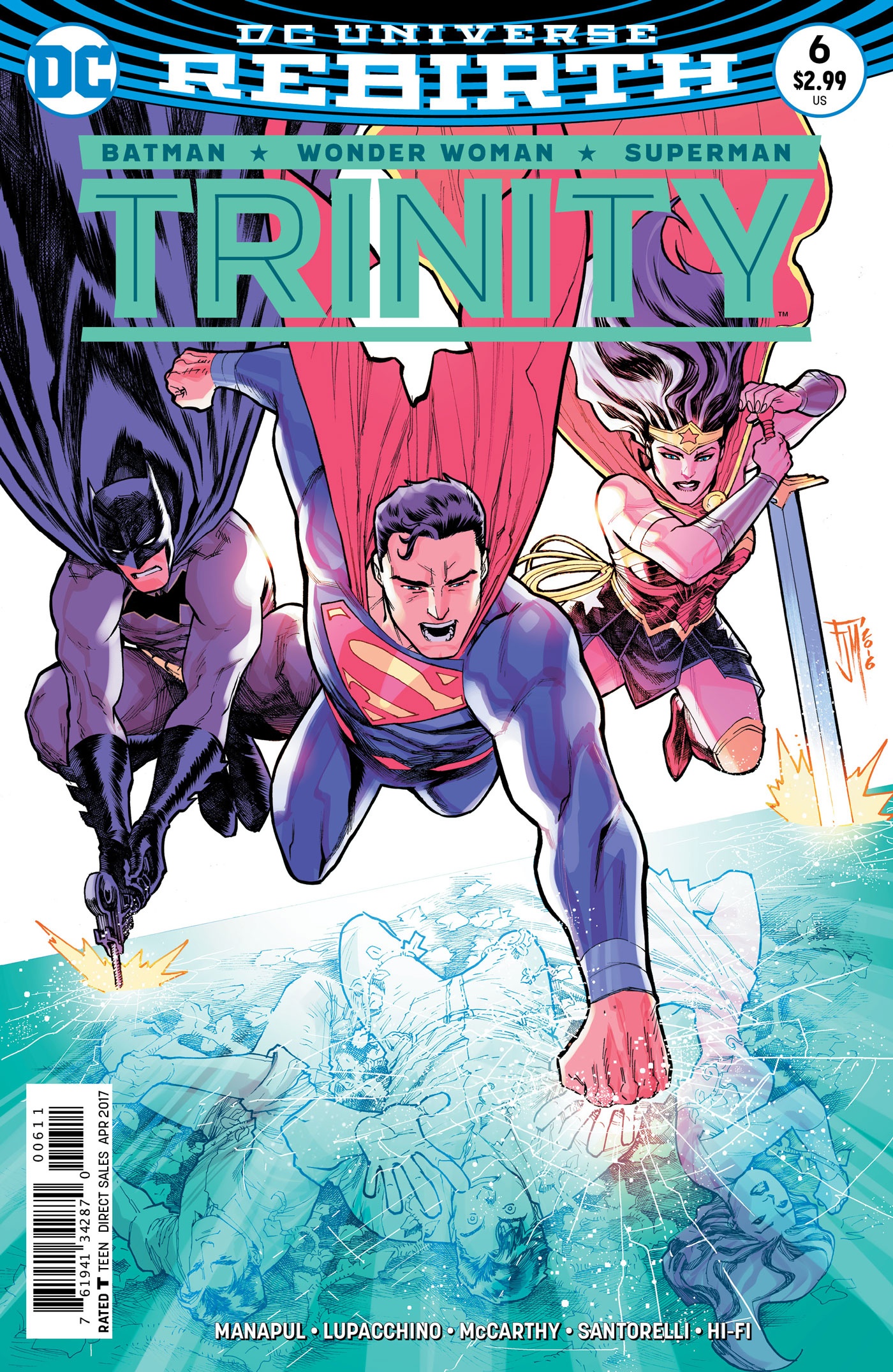“Better Together, Finale: At the Mercy”

Writer – Francis Manapul
Artist – Emanuela Lupacchino
Francis Manapul pens the finale to his “Better Together” narrative in Trinity #6,
While the Earth’s greatest heroes remain trapped in Mongul’s dream world, the arch-villain escapes and inhabits the body of Clark Kent. Having reached his ultimate goal of freedom, Mongul turns on Poison Ivy.
Despite being created out of the malice of Mongul, the child, White Mercy, has a change of heart. White Mercy’s experience of the heroes’ joy, loyalty, and regret awoke an unexpected emotional response. Surprisingly, embracing these newly discovered emotions gives White Mercy the inner strength necessary to help the heroes escape Mogul’s dream world.
In order to escape, Mongul possesses the body of Clark Kent and begins wreaking havoc. To stop him, Batman agrees to allow White Mercy to possess the body of Bruce Wayne. While in Bruce’s body, White Mercy reconnects with her mother, Poison Ivy — for the first time outside Mongul’s distorted reality. Together, they resist. Relying on Bruce’s preparedness and resiliency, White Mercy utilizes his Kryptonite necklace against Mongul. The shock of the Kryptonite breaks the spell and exorcises Mongul from Clark’s body. White Mercy relinquishes control of Bruce’s body voluntarily, but at great cost. In its conclusion, however, the last panel of Trinity #6 suggests not-so-subtly that readers have not seen the last of White Mercy.
The narrative in Trinity #6 serves to recap the story of the past five issues and resolve the conflict with Mongul. While the battle reaches its climactic end, it rushes to tie loose ends. The heroes display their powers and true identities in front of Poison Ivy. White Mercy erases Poison Ivy’s memory via their connection with The Green. As a result, Ivy conveniently forgets where she is, how she arrived, and asks for directions back to Gotham. Unfortunately, the poignant character development invested in Poison Ivy over the last six issues of Trinity seems lost with this plot device.
The art in Trinity #6 is a stark contrast from previous issues. Gone is the watercolor effects of the first five installments in favor of darker inks and colors. Trinity #6 is visually appealing. However, up against Manapul’s earlier issues, it pales in comparison. While contrasting stylistically, the emotive facial expressions shine through, particularly with White Mercy’s character. As a single issue, Trinity #6 is artistically solid. Still, I was disappointed the story’s finale looked and felt so different from its predecessors.
Conclusion
Trinity #6 tidily wraps Manapul’s “Better Together” narrative in a neat bow. The issue is solid on its own, but falls short of the high standards established by previous issues. Yet, as “Better Together” ends, it leaves plenty of new beginnings for future Trinity stories. This new title is impressive, and I anticipate more intrigue and success in its bright future.

Images courtesy of DC Entertainment.






